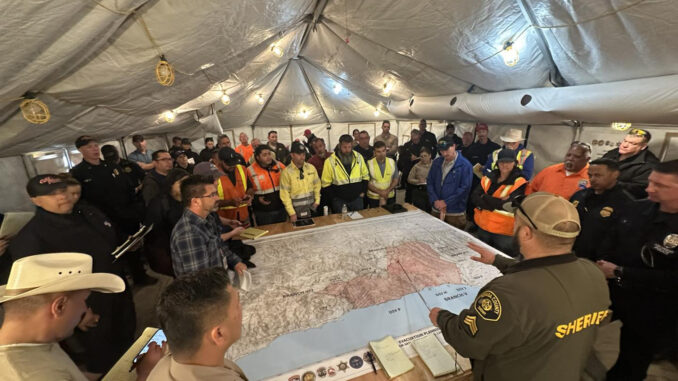
Following evacuation warnings and orders helps keep individuals and neighborhoods safer during disaster
by Anne Stokes
Leaving home and all of one’s belongings behind in the face of looming catastrophe is difficult, but individuals ignoring evacuation orders can affect communities as a whole and cost others their homes.
“If firefighters are worrying about people in their homes, they’re not going to be fighting the fire, they’re going to be helping us evacuate,” says Sheriff Shannan Moon, who also serves as coroner and public administrator in Nevada County. “We need our firefighters to be fighting fire.”
When disasters happen, local authorities alert the public to potentially deadly conditions with evacuation warnings and orders: An evacuation warning is advance notice to prepare for danger to come, while an evacuation order is a lawful order and directive to leave immediately. Those who need extra time or help—people with mobility or other health issues, those who live in remote or hard to navigate geography or who have large animals or livestock, for example—should evacuate when they hear the warning.
“If firefighters are worrying about people in their homes, they’re not going to be fighting the fire, they’re going to be helping us evacuate. We need our firefighters to be fighting fire.”
Shannan Moon, Nevada County Sheriff, Coroner and Public Administrator
“I’ve been evacuated several times living in Northern California, and I can tell you that we don’t make that decision lightly,” Moon says. “There isn’t any piece of property worth your life. Everything can be rebuilt, things can be repurchased. I know it sounds like it would change your life—it absolutely will—but you’re still alive.”
Moon says officers will go door-to-door whenever it’s possible during these situations. The purpose isn’t to force people out of their homes, but rather to ensure everyone is aware and able to evacuate.
“A lot of times when disasters occur, stress levels are really high,” says Moon. “We want to try to make sure that we stay calm and we prepare ourselves for the eventuality that this is going to happen, and then we just enact our plan.
The sheriff says preparedness and keeping cool heads can avoid this stress and the chaos that can potentially result: “People are so stressed out that they’re ramming cars. We’ve seen medical issues, we’ve seen heart attacks, all those things, just because it is a chaotic situation.”
In dealing with wildfires, floods and other disasters, Sheriff Moon says the California Governor’s Office of Emergency Services (Cal OES) has been a valuable partner. Cal OES has provided trainings to update and improve emergency response and—through the agency’s mutual aid system—Nevada County has received additional staff and other resources from neighboring agencies. After emergencies, Cal OES has also been helpful in getting people back home.
“Emergencies are going to happen and we want to be highly trained,” Moon says. “For my staff here locally I say we’re doing really well at this job. We’ve had a lot of incidents to work through.”
“Recovery efforts after an incident with the Office of Emergency Services, getting folks back into their homes and through that recovery process has been critical for Nevada County.”
Sign up for local emergency alerts from the California Governor’s Office of Emergency Service’s Listos California program at www.listoscalifornia.org/alerts/.




